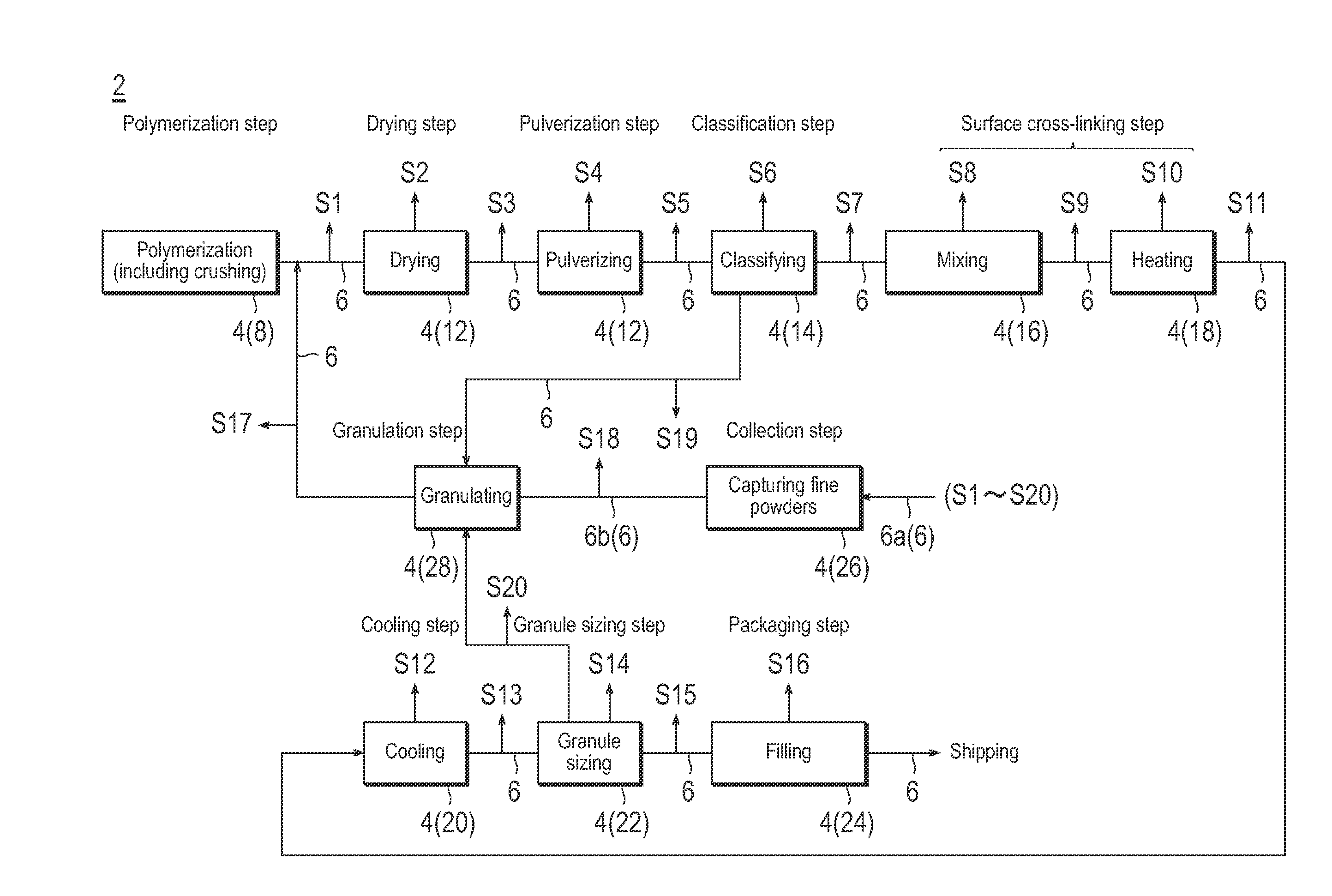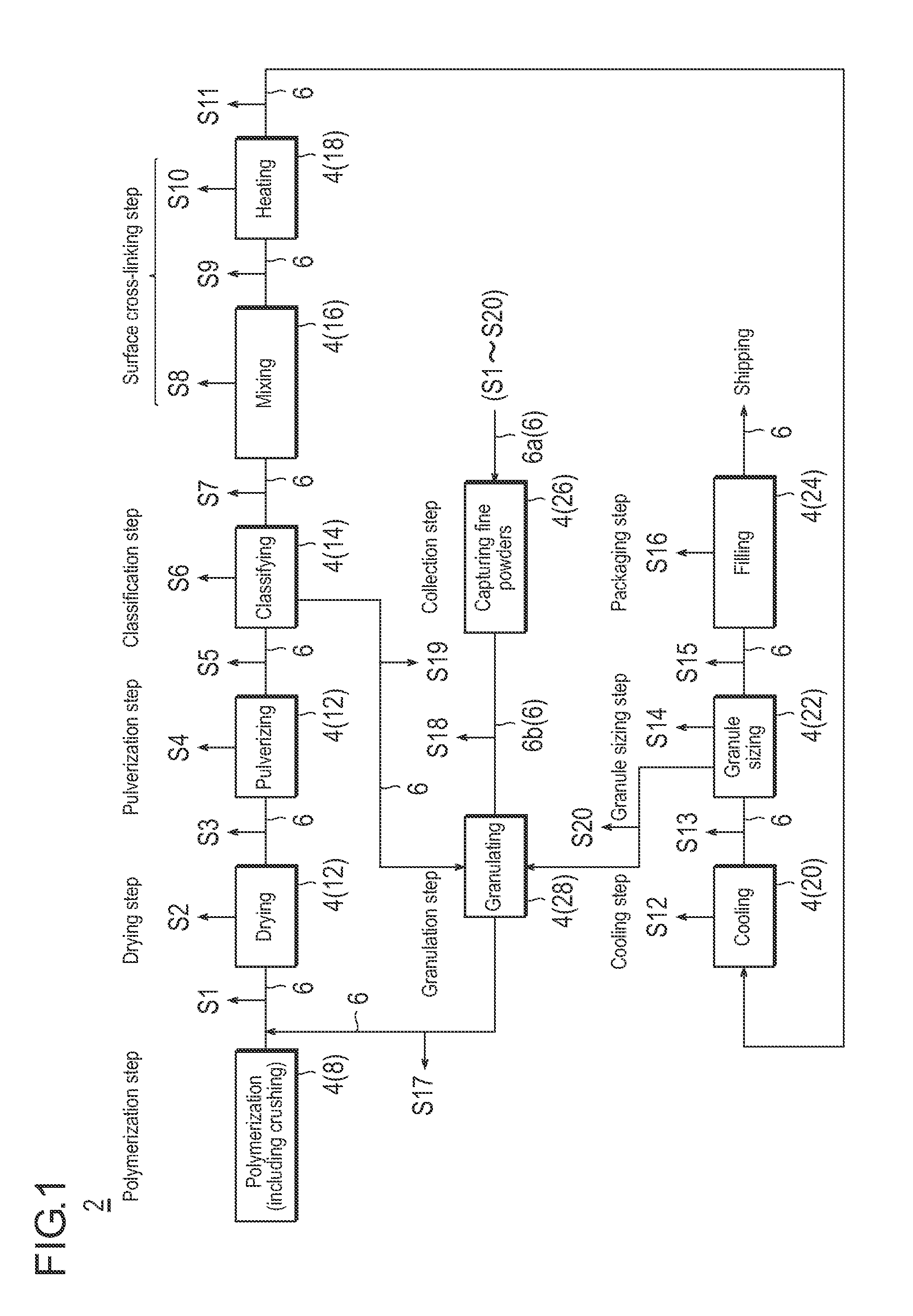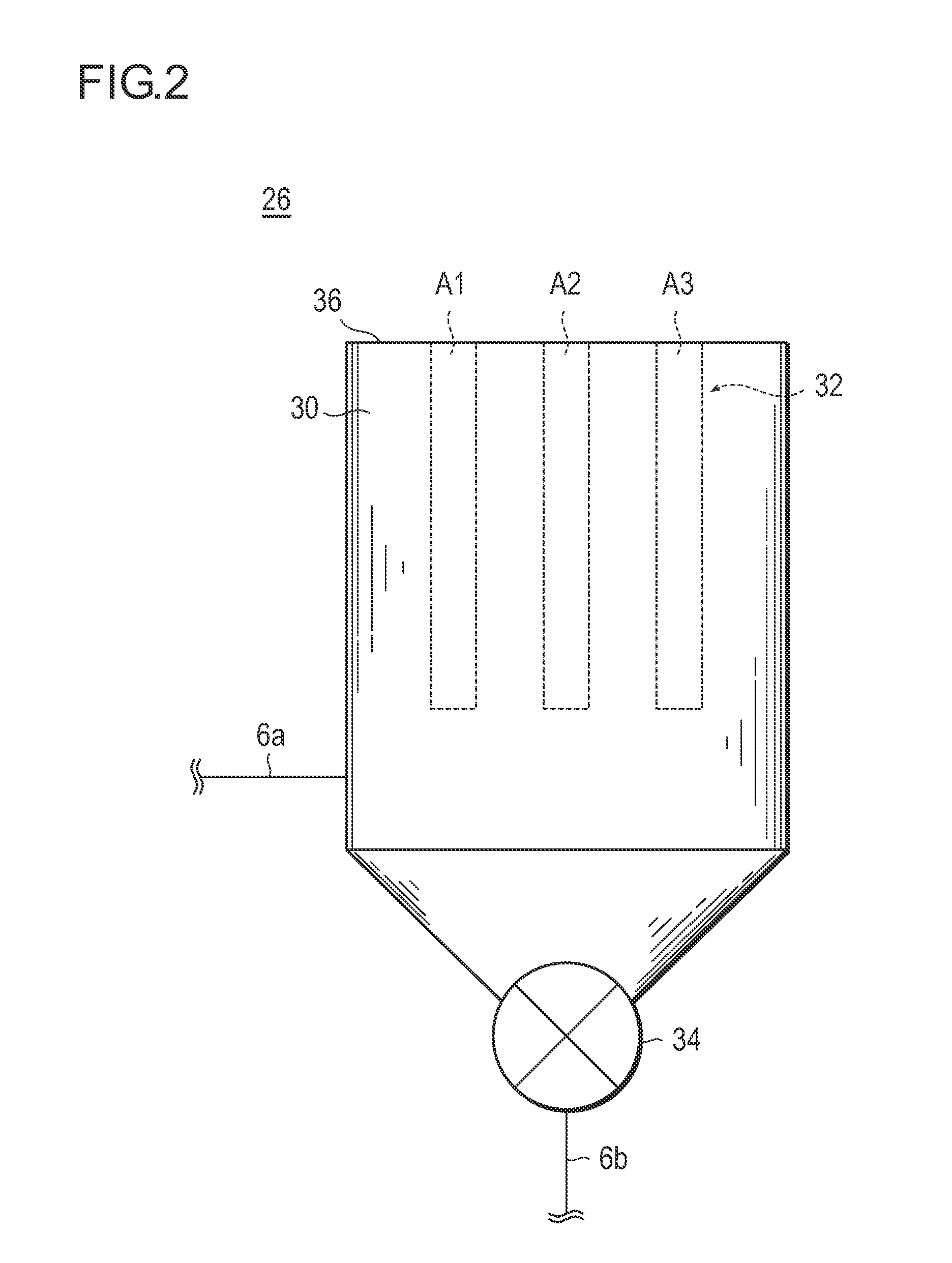Method of manufacturing a particulate water-absorbing agent composed principally of a water-absorbing resin
a technology of water-absorbing agent and water-absorbing resin, which is applied in the direction of packaging, transportation and packaging, packaging goods, etc., can solve the problems of reducing the liquid permeability of the absorbent article, increasing the production cost of the particulate water-absorbing agent, and reducing the absorbency against pressure. , to achieve the effect of preventing the scattering of particles, reducing the production cost of the particulate water-absorbing agent, and efficient collection
- Summary
- Abstract
- Description
- Claims
- Application Information
AI Technical Summary
Benefits of technology
Problems solved by technology
Method used
Image
Examples
example 1
[0191]In a production apparatus of FIG. 1, the particulate water-absorbing agent (150000 kg) was produced continuously. This production apparatus has capability of producing the particulate water-absorbing agent in 1500 kg / hr. It should be noted that, the first pipeline jointed to the fine powder capturing apparatus was connected to the positions shown by S6, S7, S10, S12, S14 and S16, among positions shown by the arrow lines S1 to S20 in FIG. 1, in a reduced pressure state. Degree of reduced pressure differs somewhat depending on parts jointed, however, it was set in a range of −20 to −40 mmAq (=reduced pressure of 0.196 to 0.392 kPa) (gauge pressure). The apparatuses and pipelines other than the above-described one were set in normal pressure. The second pipeline 6b, which is jointed to the fine powder capturing apparatus, was jointed to a granulation apparatus. This granulation apparatus was jointed to a pipeline connecting a polymerization apparatus and a drying apparatus. In th...
example 2
[0207]The particulate water-absorbing agent 2 was produced similarly as in Example 1, except that 1% by mass of a 50% aqueous solution of aluminum sulfate was added, relative to the water-absorbing resin, in the cooling step.
example 3
[0209]According to the PD measurement method, 100.00 g of the particulate water-absorbing agent 1 obtained in Example 1, was weighed and charged in the rotating drum (1) to measure mass (Pa, Pb, Da, Db) of the filter and the glass filer paper before and after the measurement, and thereby amount of the filter dust permeation (PD) was measured. As a filter (3) in this case, the same one as the bag filter used in Example 1 was used.
PUM
| Property | Measurement | Unit |
|---|---|---|
| weight average particle diameter | aaaaa | aaaaa |
| absorbency | aaaaa | aaaaa |
| particle diameter | aaaaa | aaaaa |
Abstract
Description
Claims
Application Information
 Login to View More
Login to View More - R&D
- Intellectual Property
- Life Sciences
- Materials
- Tech Scout
- Unparalleled Data Quality
- Higher Quality Content
- 60% Fewer Hallucinations
Browse by: Latest US Patents, China's latest patents, Technical Efficacy Thesaurus, Application Domain, Technology Topic, Popular Technical Reports.
© 2025 PatSnap. All rights reserved.Legal|Privacy policy|Modern Slavery Act Transparency Statement|Sitemap|About US| Contact US: help@patsnap.com



